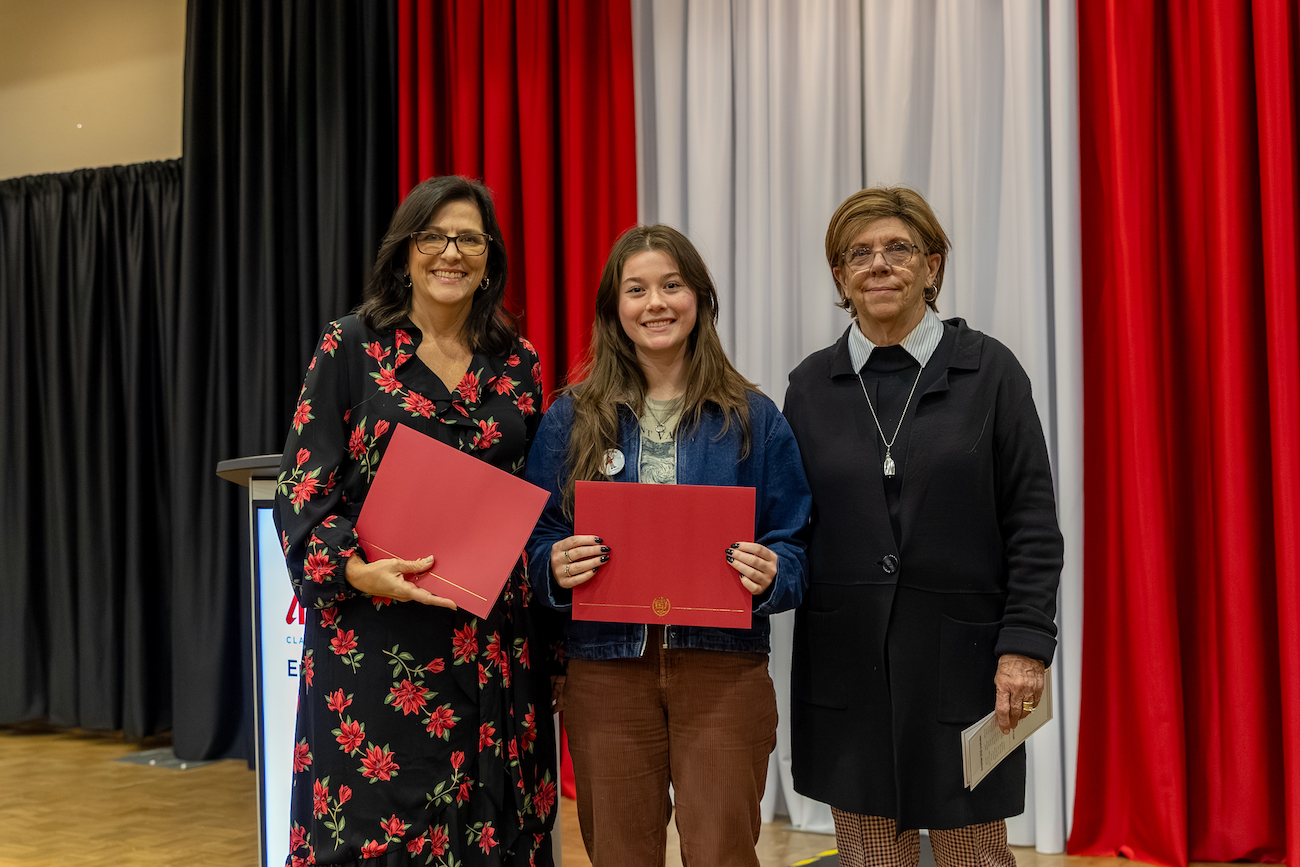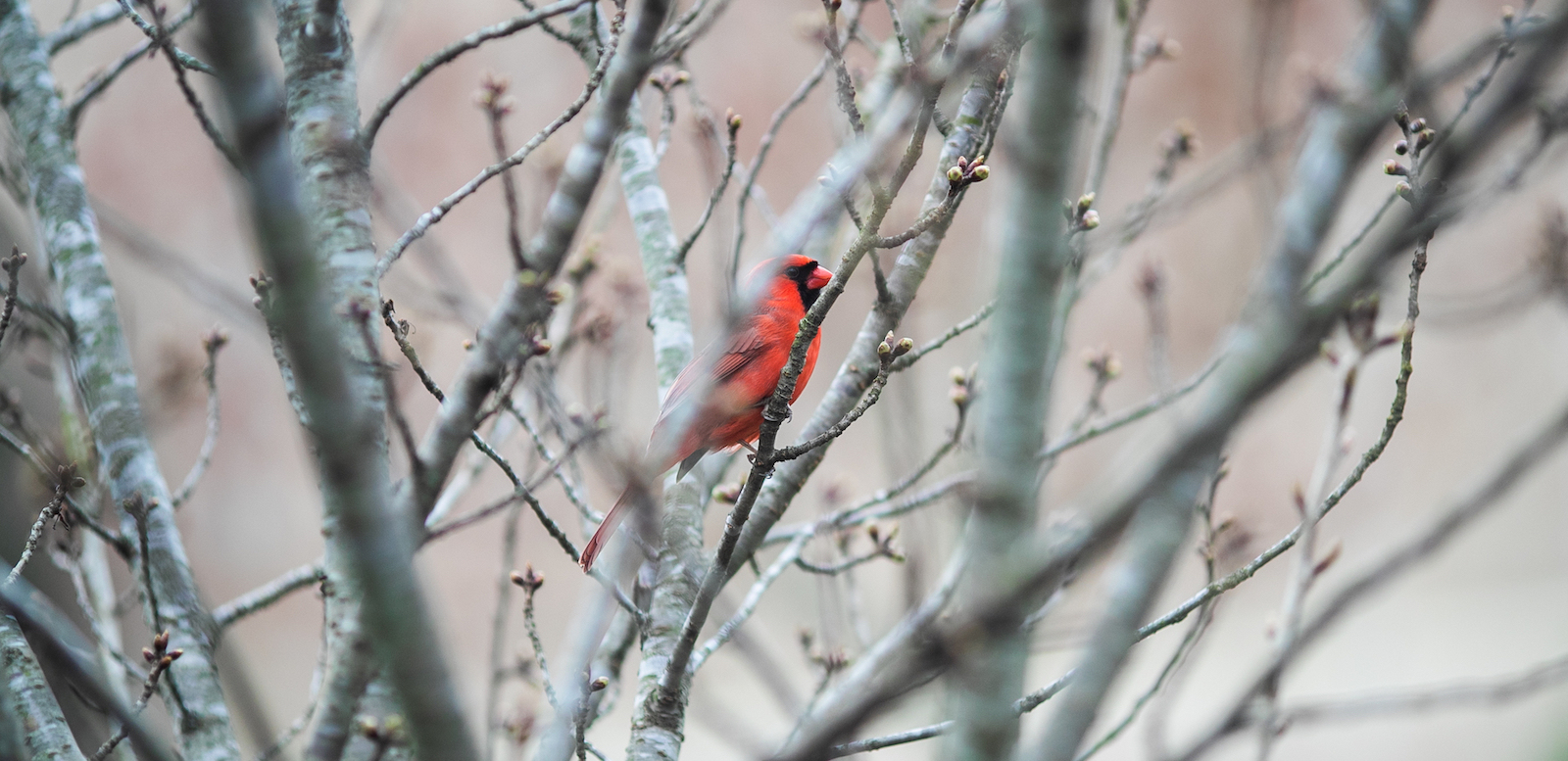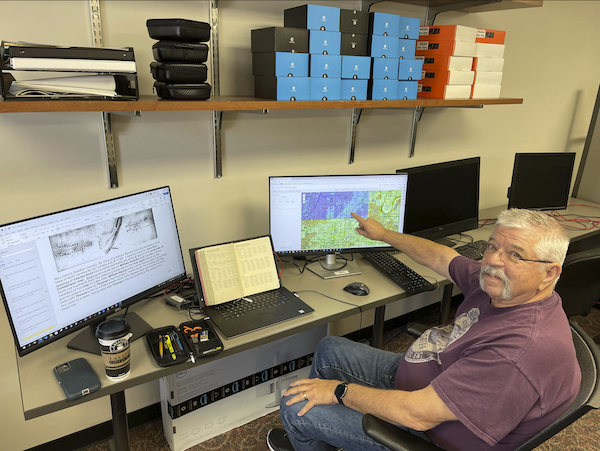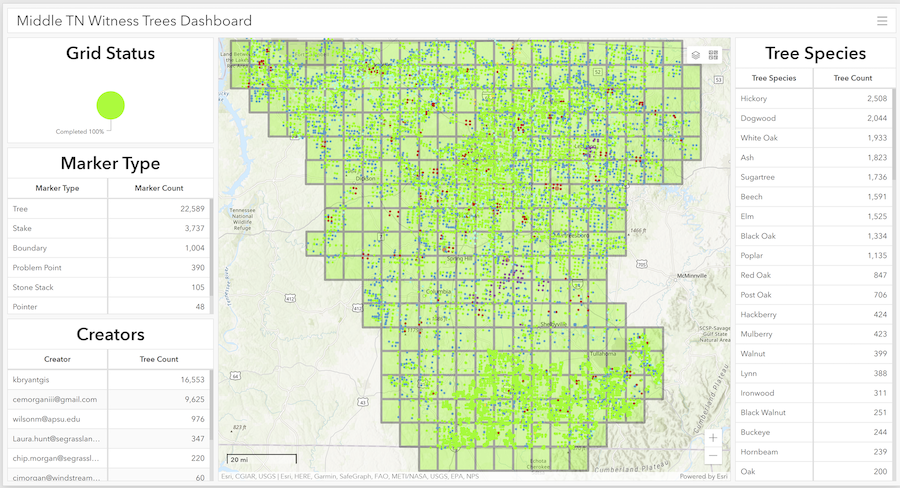SGI volunteer completes 2-year mapping project identifying ‘witness trees’ in Middle Tennessee
(Posted on Monday, April 24, 2023)
Kurt Bryant, a volunteer with the Southeastern Grasslands Institute (SGI) at Austin Peay State University, has completed a mapping project that took him over two years and more than a thousand hours to finish. Bryant provided 80% of all volunteer hours on the project.
The goal of the project was to use historical land survey records to identify individual tree species used as corner landmarks on land deeds. These are known as “witness trees.” This data provides a historical record of sampled tree populations from the 1760s-1820s in Clarksville and the entire Middle Tennessee region.
The project aligned with Bryant’s interests, and GIS Center at APSU Director Dr. Mike Wilson approached him in 2020 about joining the project. The GIS Center is helping SGI with the project.
“After I retired in July 2020 (as Montgomery County IT director), he contacted me to see if I would be interested in working on this project as it went hand in hand with my interests in deeds and grants,” Bryant said. “I’ve been working on Montgomery County deeds for years. Currently, I also volunteer at Montgomery County Archives on an all-names deed index.
“I was inspired by this project as NC grants are similar to land deeds, and I have several ancestors that were in the Revolutionary War,” added.
Chip Morgan, GIS analyst for SGI, shared a photo of Bryant as he pointed at the last of over 27,000 data points entered.
“I spent my time populating grant calls at the corners or meanders of streams with trees by species, stakes, boundaries, stone stacks, etc.,” he said. “When all the input was done, I went back and validated those points.”
SGI and the GIS Center, along with several volunteers, poured over records from the period that showed where people were moving to, what the land was like, and what trees were prominent in the area.
“The diverse population of various tree species and being able to go back to the source of the grants when the documentation was missing some information was most interesting to me about this project,” Bryant said.
A link to the Revolutionary War
The project has 304 grids covering 10,000 square miles.
Surveyors had plenty of work during that time, especially between 1789 and 1804 when Revolutionary War veterans converged on Middle Tennessee – then still part of North Carolina – to take advantage of the land grants awarded to them by a young U.S. Government. The grants were a reward – and payment – for the veterans’ war-time service.
During those rustic days, the land surveyors used trees and other features of the landscape to plot out parcels of land. Their highly detailed notes, which are still on file with the North Carolina state government, provide windows into this region’s past.
“What we want to do with this is analyze the maps,” Dr. Dwayne Estes, SGI director, said. “If we can visualize where these properties were, then we can visualize where these trees were on the landscape.
“This helps us to know what the landscape was like because certain trees grow only in certain types of landscapes,” he added. “Beech trees indicate forests in the historical landscape whereas post oaks or blackjack oaks indicate open grasslands. Sometimes when no trees were present surveyors would use a wooden stake, so areas with lots of stakes often indicate prairies.”
The updated digital maps will be published online for anyone to access, allowing people to learn more about what Middle Tennessee looked like over two centuries ago.
“The goal is to have all these points available to anyone doing any type of research,” Wilson said. “I think it’s going to be a great data set, not just for the public, but for researchers. There is just so much potential.”
News Feed
View All News
Two hours after his interview with the Clarksville Police Department (CPD), Army veteran Dustin Zook had a job offer in hand--a swift result powered by the preparation he built through Austin Peay State University's Military-Affiliated Professionals Program (MAPP).
Read More
Graduating seniors from Austin Peay State University's Eriksson College of Education achieved the program's highest edTPA passing rate and scores since the university adopted the assessment in 2013, positioning these newly licensed teachers to succeed in Tennessee's classrooms.
Read More
Austin Peay State University Middle College students are leading campus-wide bird strike research through the Bird Alliance, documenting window collisions and contributing to ongoing conservation efforts that have significantly reduced bird deaths on campus.
Read More
